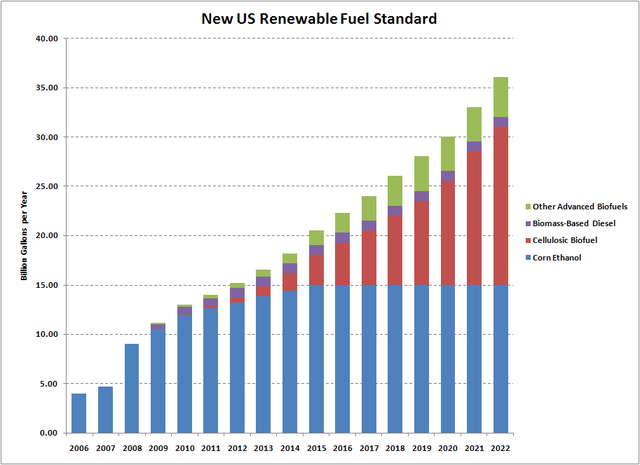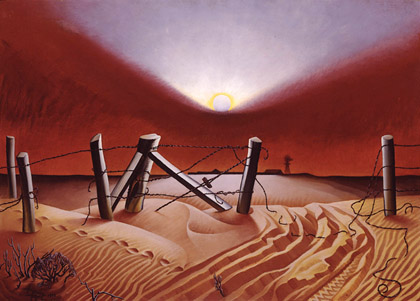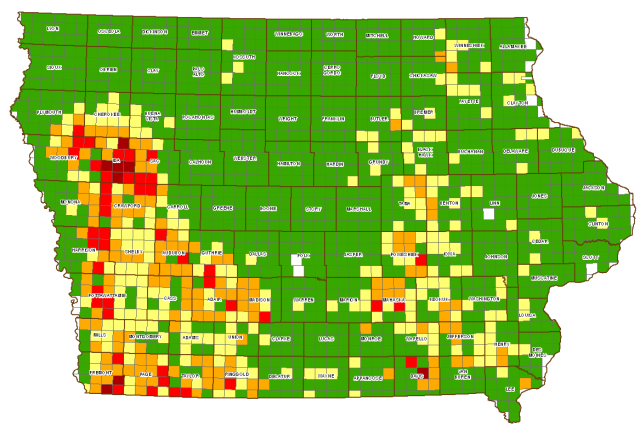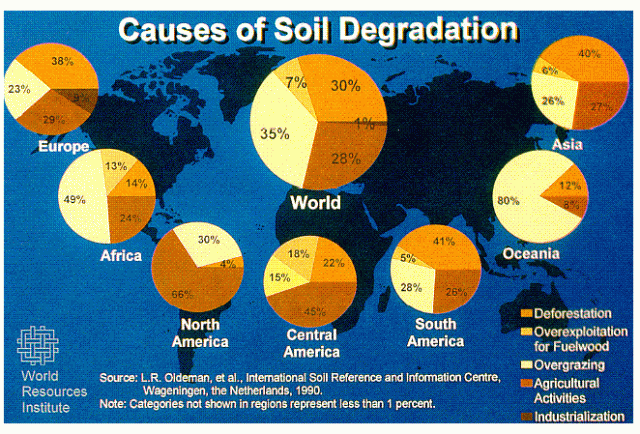A growing pressure on American farmers to pack every acre with crops is now leading to a drastic increase in topsoil loss due to erosion.
Erosion is an old problem, one that Americans thought they solved after the Dust Bowl by simply changing planting, tilling and irrigation practices (OK, not that simple).The causes are new, and ultimately the blame lies at the feet of agribusiness and the government that subsidizes it.
Driven by skyrocketing crop prices, practices such as planting up to stream beds and unnecessarily excessive tilling are now commonplace. CBS News reports (4/7/11) that in between spring 2010 and spring 2011, corn prices have increased 52 percent and soy 45 percent. Corn prices are being driven by the demand for ethanol production, which is skyrocketing in order to meet Renewable Fuel Standards. Production of these so-called renewable fuels will eventually reach 36 billion gallons per year by 2022.

The Environmental Working Group (EWG) and Iowa State University found that erosion in Iowa is much worse than previously reported. In some regions, soil loss was found to be 12 times greater than the previously stated average loss of 5.2 tons per acre per year.
The stated average loss is only slightly higher that the “sustainable” 5 tons of soil that is naturally generated per acre of Iowa soil. In the study, however, scientists measured soil loss after storms, estimating that up to 64 tons of soil per acre gets washed away. Over 6 million Iowa acres had at least twice the erosion of what is sustainable.
Changing weather patterns and inadequate enforcement of protections compound the problem in the Corn Belt. Heavy rains in 2009 devastated farmland across the state and down the Mississippi River Valley.
Iowa prairie soils 150 years ago had about 12-16″ of topsoil; now they have only about 6-8″ of topsoil.
This is a loss of fifty percent! And I think we will want to be here fro more than another 150 years. What’s more, the entire world depends on the black soil of the Midwest to feed an exploding population.
Erosion is an omnipresent problem in history and around the world. In North America, though, we cannot seem to help ourselves in making it worse:
How will we respond to this crisis? With agribusiness subsidies, the rabbit hole is deep. The problems are complex. The solution is simple and it’s a theme here with The Purporters: Stop subsidizing failure, and corn ethanol is the biggest failure of all.





As you are graduate student i have one question for you that how global warming effects topsoil. Thanks
I would say that it would dry it out more due to temperature, higher evaporation rates. Many have preferred to call it “global weirding” instead because the immediate effects are an increase in weather extremes, such as drought and flood, both of which can lead to greater erosion (by wind AND water).
So, a better answer would be: Global warming leads to loss of topsoil. On average, of course.